BECKETT, EBAY & REAL BASEBALL CARD VALUES!
First, I would like to say, I appreciate that someone else shares my passion with baseball cards and has used their time, money and abilities to assist others in their shared interests. I have been a subscriber of Beckett Magazines / Price Guides for many years now. I love to read each article in order to gain more information about the hobby I love so much. To this end, Beckett has been a great resource of information. They offer pictures of many cards, that otherwise, I would never see. They have reviews of new products including interviews with card company executives that discuss what the manufacturers are doing next. There is a running tally on what cards are currently "hot" in the market. They print reader's letters, questions and comments about everything to do with the hobby and the game, list where the next card show will be, and even give us a history lesson in not only baseball cards but the game of baseball and all of it's attributes. For all of these things and more, I say thank you!
It started as a "Price Guide" for a hobby that was lacking in information for the masses and has evolved into a beautiful publication. From cheap newspaper print in the beginning to full glossy eye catching front covers that are almost as collectible as the items it covers, Beckett Baseball has emerged as a hobby cornerstone. I originally purchased the publication to get an "idea" of what my collection was worth and what I should expect to be asked to pay when I finally find a card that I want or need for my collection. I was lead to believe that this publication was "only a guide" and not the "baseball card price bible" that many have touted it as. Basically, it was to inform you as to the national average price paid for any one card or set. For example: If you lived in New York and wanted to buy a 1984 Fleer Don Mattingly RC, you would expect to pay more than "guide" price in New York as compared to buying it while on vacation in Florida, because Don Mattingly was an All-Star player for the New York Yankees. The idea of regional pricing was easily understood and the publication itself made sure to notify each reader that this was only a guide and the market itself determines a real value for each card. Despite this same information being printed in each of their publications, most collectors use the Beckett Baseball magazine as "the true value for how they calculate the price of their cards for sale". Most dealers and card shops ask for what they perceive as a regional price for what they have to offer based on the Beckett "Price Guide". If someone asks for more than what the guide lists, most collectors see it as "price gouging" or an attempt to rip-off an uninformed buyer but if they ask for less than "guide price" they are seen as a discounter in the industry and collectors are more likely to continue to shop and buy from them first and foremost. This is all based on the Beckett Baseball publication. If Beckett prints an article on Jon Papelbon with a positive spin, the collectors take notice and the majority of Jon Papelbon's cards will sell and many will draw an increase in the previous months "price". If next year he gets injured and his cards stop selling at a premium, they will print that in one form or another and his card sale prices will plummet downward even further. This is evidence that Becket Baseball magazine has a "biblical effect" on the entire marketplace of baseball cards. Evidence is provided everyday in our court system, as to whether it is accepted by the jury or judge depends on their judgement at that given time and in the context in which they were to determine whether it was true or false. My evidence is my determination and interpretation of what I have seen and experienced. I say all of this to make this statement: If Beckett Baseball prints that a Jonathan Papelbon and Craig Breslow 2006 Topps Co-Signers Dual Autograph card is currently "valued" at $50 and I can get one on EBAY for $40, then I made a good purchase, because the card "books" for $50. The perceived "value" for me, based on the magazine is still $50! If everyone decides that this is a card that they too would want to get at a discount, that does not mean that the value of the card has been lowered, just that people want to spend as little as possible to get what they want and seeing a higher value in that item is a major factor in their purchasing decision. That is why Wal Mart is a giant in retail. People want to get a "deal"! I do not expect a baseball card to depreciate like an automobile, because I am going to protect it and not wear it out causing it to be in worse condition than I bought it in. It is an investment that I expect to keep it's value or grow as long as the player pictured on it keeps doing well, stays off of the scandal pages, stays away from steroids and doesn't shun baseball fans at every turn(Barry Bonds). All of this perceived value has many other factors to calculate into the equation: How much were the unwrapped cards selling for when they first hit the market? Despite the manufacturer's "Suggested Retail Price" per pack, how much is the public actually paying to get it? How much product was produced? How well was the product received by the public? How available was the product to the public, as in was it a HOBBY ONLY EDITION or was it available at retail stores too? Were many of the original sales of "raw" product done by stores that offer a discount in order to get traffic and stay in business? I know that there are some hobby stores that sell the boxes of product at a very minor profit, (as little as $5 per box) just to try and compete for the business that bigger companies are able to generate with their ability to buy direct from the manufacturer and offer discounts in order to keep from having their money sit on shelves. How much are some stores asking for their product and not selling until they get it? If it doesn't sell right now, then Beckett doesn't use that asking price in the equation. I might have bought a card for only $25 but if I will not sell it unless someone offers me at least $60, doesn't that value need to be calculated into the "market price"? If someone is selling one or is willing to let it go for $45, that doesn't mean it is worth that to everyone. No, I am not saying that Beckett Baseball is claiming that the prices published are the "set in stone price or value", I am stating that they have a lot of power to wield with their publication and if they say jump, the majority of the hobby will. They need to be more forthcoming with where they are getting their information. I know they have a link with EBAY, to scan all of the baseball card sales that occur on any given day. They do not claim that they also search through the EBAY Stores listings, nor any other web based retailer as to what a real Internet retailer is willing to sell their products for. They claim to have key retailers in the industry, hobby shops, that supply them with pricing information, but they do not say who they are, so the general public has no ability to scrutinize their "evidence" in order to see if it is accurate in their eyes or not. You can tell me all day long that the person you get the information from is an expert, but with no real credentials out for all to see, it is like putting David Hasselhoff in as a judge of talent in a talent show contest. Many restaurants have the kitchen clearly visible for the guests to see them prepare the meals and so that guest can witness that their dinner was prepared without mucous and or saliva from their cook or waiter.
So, if you want to try and wade through all of this and publish a price "guide", based on an open to the public to scrutinize policy, then I think you are using your powers properly. Without all of these determining factors in the calculation, you end up with really outrageous information. For instance, if 2006 Fleer is available at Wal Mart for $1 per pack and has more cards than 2006 Topps Allen & Ginter which sells for $2.99 per pack, how can a common card from Fleer be valued at $ .40 per card and Topps's A & G commons are currently de-valued at $ .20 per card? All I want, is the "industry giant" to put some actual value in a market that they helped create. If you are trying to tell me that there were too many cards produced in the 80's making the market "flooded" then you need to recognize exactly how many cards are actually printed today and by only 2 companies. Well, I feel a little better getting it out, hopefully you feel informed and perhaps a little outraged too.
I am currently building a website of my own, www.BaseballBasement.com , and I will have everything from things that make sense to common cards for only a few cents!


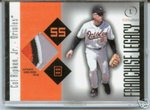


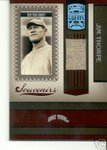
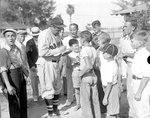
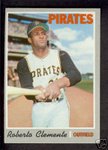
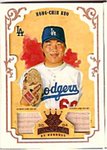
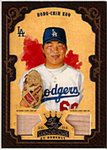
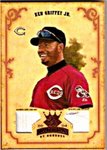
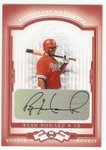

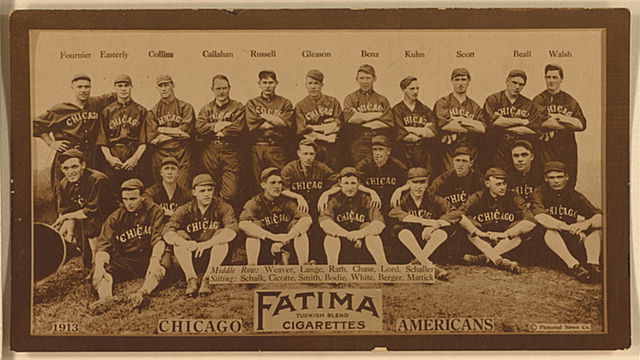


1 comment:
Great information. The hobby of collecting sport cards, not just baseball, has changed over the 20 plus years I have collected.
Enthusiasts have been abused over the years, first by over zelot manufactures, then by emerging markets and now by MLB and the MLBPA.
In the 1980's MLB and the MLBPA allowed every wanna-be company to produce cards, then the companies took advantage of the market (and collectors) by flooding the market with crap product, now the hobby authority (Beckett) abuses the collector by lowering the value of the important cards (rookies) of many of the greatest players of our time (like Boggs, Sandberg, Gwynn, Mattingly...) and they continue. Last year MLB and the MLBPA prohibited Donruss/Playoff LLC from being liscenced to produce baseball product. Even though Donruss reorganized in 2000 and came back setting the standard for quality product and thought out sets. So now we, the collectors, are screwed yet again... and the only thing we have to fall back on are the two companies that helped destroy the market and product in the late 1990's.
When will MLB, the MLBPA and industry leaders like Beckett going to look out for the consumer and the true fans of the sport and the hobby?
Post a Comment